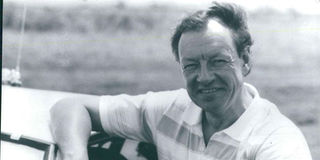How Safari Rally became ‘toughest rally in the world’

Rauno Aaltonen was fondly known as the '"Rally Professor'' for his unmatched meticulous driving skills. He raced in a record 127 countries with his 1967 Monte Carlo victory taking him to the pinnacle of rallying.
What you need to know:
- Nick Nowicki in a Peugeot 404 arrived in Nairobi over 90 minutes ahead of Peter Hughes and Beau Younghusband after Carlsson’s demise in Mbulu.
- Hughes in a Ford Anglia soon moved to second after Younghusband retired followed by Bill Cardwell in a Mercedes Benz 220 SEB.
The year 1963 was quite unique. Only seven out of 107 drivers finished the Safari. They became famous in motorsport folklore as the “Unsinkable Seven.”
Each edition of the Safari Rally had its unique DNA from the first edition in 1953 but no other Safari Rally had as great an impact as the 1963 event at home and abroad.
East Africa had never been blessed with so much rain like that month of April. Because of this, a new slogan, which would out-last the best marketing campaigns for a generation was coined, “the toughest rally in the world".
Two men, S. Mwangi and K. Karare in a Fiat 1500 represented the hope of a whole nation.
Kenya was only 45 days away from being declared a self-governed country and many able-bodied hustlers of the day had free “lunch” along the Safari Rally route, getting paid for pulling out cars bogged in the mud after heavy rains.
Starting only 10 years earlier, the Safari came off age as a unique and tough event. For the first time factory teams entered the rally.
Datsun and Hino became the first Japanese manufacturers to field full works teams, Rover brought in Rover P5. East Africans showed up in Peugeots and three models of Ford -- Anglia, Cortina and the Zodiac.
The legendary Rauno Aaltonen came from Finland for his second Safari attempt in a Mini Works car.
Saab entered Erik Carlsson from Sweden who led most of the way before Kenyans and their local knowledge prevailed. The rains were so heavy that maximum lateness was extended twice for a total of 16 hours.
The action was relayed live on Voice of Kenya radio across East Africa.
Nick Nowicki in a Peugeot 404 arrived in Nairobi over 90 minutes ahead of Peter Hughes and Beau Younghusband after Carlsson’s demise in Mbulu.
Hughes in a Ford Anglia soon moved to second after Younghusband retired followed by Bill Cardwell in a Mercedes Benz 220 SEB.




